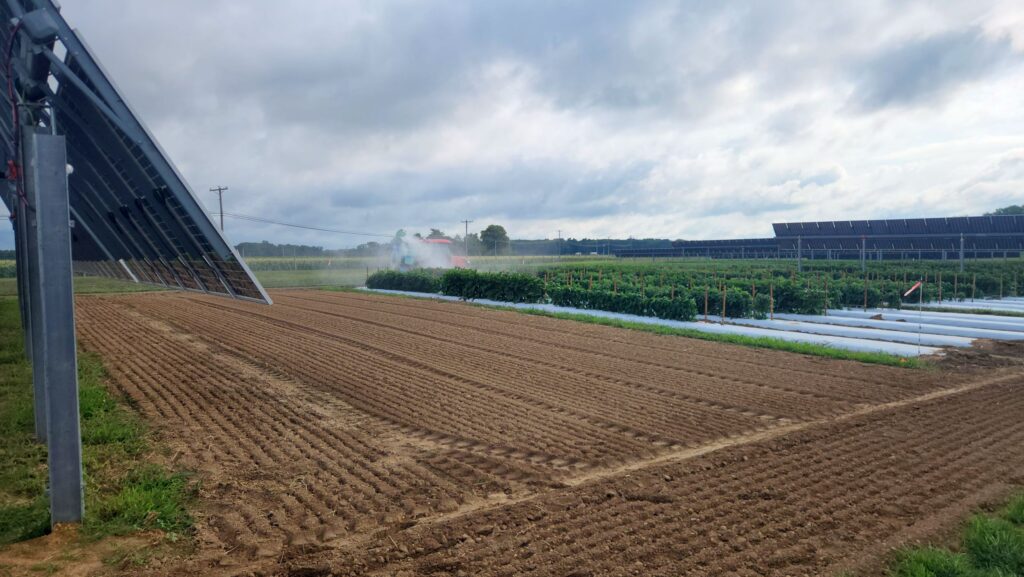Main Content
On July 15th, the weekly fungicide + insecticide spray program for common disease and insect pest control were initiated at RAREC. An air blast sprayer commonly used in orchards and vineyards for the same purposes was used to apply the pesticides across all whole plots. Since the panel post rows run north-south. The spray application was done to the east-west on the northern and southern end of the whole plots (Figure 1). The application was done in the morning at approximately 8:30 AM when the panels were facing east. The use of an air blast sprayer has its few advantages as well as many disadvantages. In small plot research such as this where the rows are ~75 ft long the distance that the spray volume has to travel is minimal. Spraying into the plot from both ends (south and north) will still provide adequate spray coverage to the foliage. By not entering the plot area will help reduce soil compaction and ruts and not predispose the panels to equipment accidents. Additionally, spray applications from outside of the panel area can be done at anytime of the day. The disadvantages include excessive drift of the pesticide application outside the plot area (compared to an application using traditional over the top boom sprayer), poorer spray coverage (especially on windier days), and pesticide deposition on the solar panels.
There are important considerations for stakeholders to consider when designing dual-use solar arrays for their own farming operation. Field-design decisions must be made around the size and type of equipment that going to be used. At RAREC, we lack a high boy boom sprayer that would allow us to drive over the staked beds in our field plots, thus our use of the air blast sprayer.
Articles and images can be used by Permission from the Rutgers RAPS Team only – For Permission contact RAPS at shawn.sorrels@rutgers.edu.


